CLIMATE CAPITAL
Rural Survival:Guardians of Mother Earth,Saving Mau,Revitalizing Native Lands
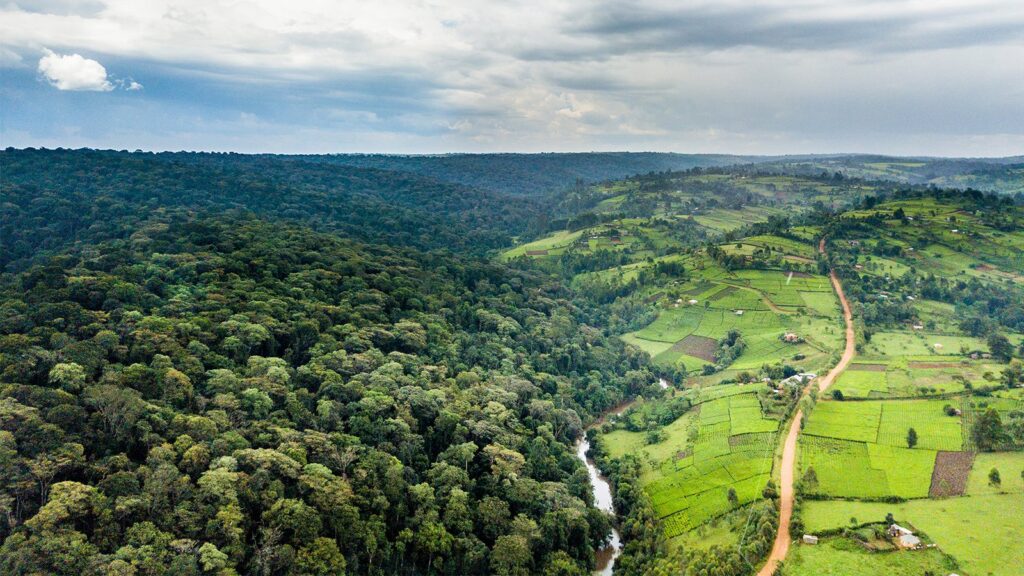
: Between 2001 and 2002, the Mau Forest deforestation resulted in loss of about 533 square kilometres of tree cover. Now, a group of women, under the aegis of the Paran Women Group, are preparing to plant 100,000 saplings this rainy season to restore the forest.
By Joyce Chimbi
Between 2001 and 2022, the Mau Forest’s deforestation resulted in the loss of about 533 square kilometers of tree cover. Now, a group of women, under the aegis of the Paran Women Group, are preparing to plant 100,000 saplings this rainy season in an effort to restore the forest.

Paran Women Group’s executive director, Naiyan Kiplagat, is working in the forest. The group are passionate guardians of the environment and promoters of gender equality. Credit: Joyce Chimbi/IPS
The Great Rift Valley is part of an intra-continental ridge system that runs through Kenya from north to south. A breathtaking, diverse mix of natural beauty that includes dramatic escarpments, highland mountains, cliffs and gorges, lakes and savannas. It is also home to one of Africa’s greatest wildlife reserves—the Maasai Mara National Reserve.
give life to this wondrous natural phenomenon. Located about 170 kilometres northwest of Nairobi, this is the largest indigenous montane forest in East Africa. It is also the largest of the country’s five watersheds and a catchment area for 12 rivers that flow into five major lakes.
More than 10 million people depend on its rivers. Its magnificent portfolio of rare plants and animal species is unfortunately a magnet for illegal activities. Forest monitoring groups say a staggering 25 percent of the forest was lost between 1984 and 2020 and that overall, Mau Forest lost 19 percent of its tree cover—around 533 square kilometres—between 2001 and 2022.
“Paran Women Group is committed to restoring the Mau Forest. To stop the pace and severity of its destruction and degradation, we approached the government through the Kenya Forest Service (KFS) and were allowed access to 200 acres of the Maasai Mau Forest block, which is one of the 22 blocks that make the entire Mau Forest Complex. There are 280 water catchments inside the complex,” Naiyan Kiplagat, the executive director of the Paran Women Group told IPS.
“In January this year, we began our restoration efforts and have already covered 100 acres. At the moment, we have prepared 70,000 seedlings and intend to collect another 30,000 from women groups to reach our target of 100,000 tree seedlings, which will be planted once the rainy season begins to cover the remaining 100 acres.”
In Maa, a language spoken by the Maasai community, Paran means ‘come together to assist each other’. Paran Women Group is an organization comprised of women from the Maasai and Ogiek communities who are indigenous, minority ethnic groups.

Forest rangers working for the Kenya Forest Service are responsible for protecting Kenya’s forests. Paran Women Group are in a partnership with KFS to restore Maasai Mau Forest block. Credit: Joyce Chimbi/IPS

There are 280 water catchments inside the expansive Mau Forest Complex. These feed 12 rivers, which in turn feed five major lakes. Credit: Joyce Chimbi/IPS
The organization comprises 64 women groups and 3,718 members. United against dual marginalization and patriarchy, the group started small, in 2005 and continues to grow and expand their base and conservation activities.
Carrying the wisdom of their ancestors, they rely on indigenous knowledge and innovation in their conservation, afforestation, reforestation and all other land restoration efforts while promoting gender equality. Paran Women Resource centre is located in Eor Ewuaso, a remote rural village in the Ololunga location of Narok South sub-county, Narok County, in the Rift Valley.
The women hold a title deed to the expansive piece of land. A notable achievement in a minority community where women have little autonomy and land is owned and controlled by men. They have another seven satellite resource centres within the expansive counties geared towards giving women access to productive resources.
These centres are a hub of knowledge and activities to promote conservation and livelihood activities such as sustainable agriculture, beekeeping, beadwork and briquettes for energy-saving cooking to release pressure from the embattled Mau Forest. More than 617 households are already using efficient, energy-saving stoves.
“We are conservationists with a passion for gender equality. Gender-based violence is prevalent in indigenous communities, such as the outlawed Female Genital Mutilation and forced marriages. The most recent incidence was of a nine-year-old girl. We are marginalized as a community in general and worse, our culture has few rights for women and girls. We help children stay in school by paying school fees from our income-generating activities,” she says.
Patrick Lemanyan, a resident of Ololunga, says Paran women “rear and sell chicken and foods such as pumpkin, vegetables and sorghum. They also sell beadwork. Maasai beadwork is unique, beautiful and very marketable. In Nairobi, there is even the popular Maasai market for such beadwork and other Maasai items, such as sandals. The women here face no resistance from the community. We have suffered for many years from failed rainfall and we know that saving the forest is also about saving us as a community.”

Paran Women Resource Centre is located in Eor Ewuaso, a remote rural village in the Ololunga location of Narok South sub-county, Narok County, in Rift Valley. Credit: Joyce Chimbi/IPS

Some of the jewelry that the women at the Paran Women Group make. Credit: Joyce Chimbi/IPS
Naiyan says indigenous communities depend on natural resources such as forests, rivers and their biodiversity for their survival. The ongoing climate and biodiversity crises affect them the most as a community. Women have no assets and are therefore worse off.
“The Maasai’s are pastoralists. During prolonged dry seasons, a man will take all the livestock with him and move from place to place for even three years, leaving behind his wives and children. The family is left behind with nothing because women own nothing,” she says.
Naiyan, an Ogiek married to a Maasai, says the Ogiek have not faired any better. As hunters and gathers in an ecosystem that has been destroyed by human activity and climate change, they too are in a life-and-death situation and, are learning to pursue livelihood options outside of their indigenous lifestyle by keeping poultry for sale and farming. Men do not keep or concern themselves with poultry as it is considered beneath them. They keep large livestock such as cows and goats.

Originally pastoralists and hunters and gatherers, the Maasai and Ogiek have turned to sustainable agriculture as a climate adaptation mechanism. Credit: Joyce Chimbi/IPS

These are manyattas, Maasai traditional homes. Women from the Maasai and Ogiek communities have joined forces to save their native lands. Credit: Joyce Chimbi/IPS
“The role of indigenous groups and more so women, in environmental protection cannot be overemphasized. More so as women are able to combine conservation efforts with income-generating activities. They educate and support each other, and their children grow to school, breaking the debilitating cycle of poverty associated with minority groups due to historical injustices and inequalities,” says Vesca Ikenya, an educator in Gender and Natural Resources.
Stressing that “indigenous people and local communities bring on board indigenous knowledge and leadership that only they possess as custodians of their own lands and waters and have had intimate interactions with their ecosystems since time immemorial. Each generation preserves and passes on this knowledge to the next. When indigenous and local communities take lead in conservation efforts, they never get it wrong. They understand which species grew where and when.”
The Paran Women Group tree nursery is home to 27 indigenous species, including croton macrostacyus, syzygium cuminii, prunus African and Olea Africans. Of the 150,000 tree seedlings already planted this year, 112,500 have survived and are thriving.
According to 2021 International Work Group for Indigenous Affairs and International Labour Organization joint report, indigenous peoples were responsible for protecting an estimated 22 percent of the planet’s surface and 80 percent of biodiversity.
The Paran Women Group has not gone unnoticed and has won a series of international awards. In 2018, they received an award on rural survival from the World Women Foundation Summit; in 2020, they received the International Leadership Award from the International Indigenous Women’s Forum; last year, during the COP28 in the UAE, they received the Gender Justice Climate Solutions and are preparing to receive yet another international award in October 2024.
This feature is published with the support of Open Society Foundations.
IPS UN Bureau Report
CLIMATE CAPITAL
Access Bank Secures CAK Approval for National Bank Acquisition
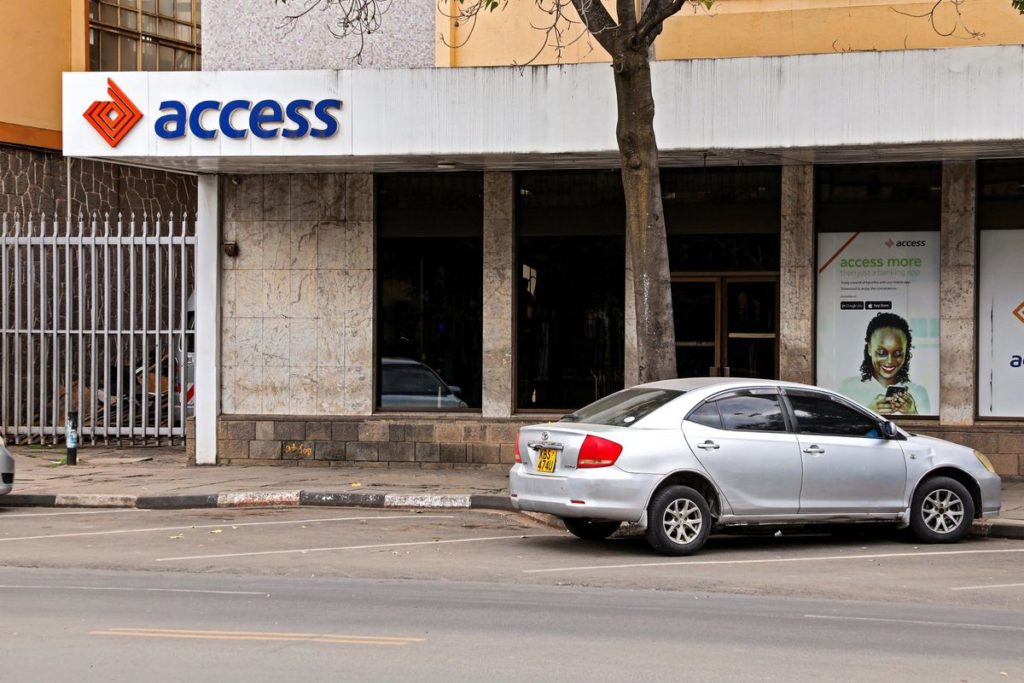
: Access Bank to acquire National Bank of Kenya for $100M, boosting market
share to 1.9% with CAK approval and workforce retention conditions.
CAK Approves Access Bank’s Acquisition of NBK with Conditions
The Competition Authority of Kenya (CAK) approved Access Bank’s acquisition of the
National Bank of Kenya (NBK) from KCB Group, requiring Access Bank to retain 80% of
NBK’s workforce for at least one year.
The Central Bank of Kenya (CBK) must now give its final approval for the deal.
Employment Retention Key to Approval
According to CAK, Access Bank must maintain 80% of NBK’s 1,384 employees and all
316 staff from its local subsidiary, Access Bank Kenya, for a year following the
transaction’s completion. “The transaction has been approved on condition that Access
Bank Plc retains, for one year, at least 80% of the target’s current workforce,” CAK
stated.
Deal Valuation and Finalization Timeline
While the deal’s value has not been disclosed, KCB Group announced in March 2024
that NBK would be sold for 1.25 times its book value. With NBK’s 2023 book value at
$79.77 million, the acquisition is estimated to be worth approximately $100 million. The
transaction is expected to conclude in November.
Expanding Access Bank’s Kenyan Presence
Access Bank’s current footprint in Kenya includes 23 branches in 12 counties. Acquiring
NBK’s 77 branches across 28 counties will significantly boost its presence and service
offerings, including retail, corporate, and Islamic banking. Access Bank, currently
ranked as a tier 3 lender, will integrate with NBK, a tier 2 institution, enhancing its status
in the market.
Market Share and Competition Analysis
The acquisition will give the merged entity a 1.9% market share in Kenya’s banking
sector. “The combined market size is unlikely to raise competition concerns since it is
low,” CAK noted. “The merged entity will face competition from other banks in the
market. Based on this, the transaction is unlikely to substantially lessen or prevent
competition.”
CLIMATE CAPITAL
Patricia Ithau: CEO of WPP-Scangroup, Leading Africa’s Marketing Giant

: She leads WPP-Scangroup PLC, the largest marketing and communication group in sub-Saharan Africa, driving innovation, business growth, and social impact across the region.
Patricia Ithau leads WPP-Scangroup PLC, the largest marketing and communication group in sub-Saharan Africa. She took over as CEO on March 14, 2022, succeeding Bharat Thakrar at the helm of this Nairobi Securities Exchange-listed company.
Under her visionary leadership, WPP-Scangroup continues to redefine the marketing and advertising landscape in East Africa through a multi-agency, multi-disciplinary approach.
Her focus on pushing the boundaries of creativity and innovation has positioned the company to drive growth and deliver groundbreaking solutions across the region.
Early Life and Academic Foundation
Patricia’s leadership journey grew from a strong academic foundation.
Patricia Ithau studied at Loreto Convent Msongari in Nairobi before earning her Bachelor of Commerce degree from the University of Nairobi.
Further expanding her knowledge, she earned an MBA in Strategic Management from the United States International University-Africa.
She also completed advanced management programs at prestigious institutions like Strathmore University, IESE Business School, INSEAD, and Oxford University, laying the foundation for a distinguished career in business leadership.
Career Milestones: L’Oréal Africa and Beyond
Before joining WPP-Scangroup, Patricia was the founding CEO of L’Oréal Africa, where she significantly drove the company’s growth and success in the region.
Under her leadership, L’Oréal’s African subsidiary generated $25 million in annual revenue, employed over 270 people, and produced 40 million units annually.
One of her key achievements was leading one of the first acquisitions of a local business by a multinational in East Africa, demonstrating her ability to drive growth and market penetration in the competitive FMCG sector.
Advocacy for Women in Leadership
Patricia has actively championed women in leadership, advocating for creating opportunities that allow women to thrive in the corporate world.
As an Ambassador for the Women on Boards Network (WOBN) in Kenya, she has worked to elevate women into leadership positions.
She holds board positions at organisations such as ABSA Bank Kenya, Jambojet Ltd, Vivo Fashion Group, and the British Chamber of Commerce.
Furthermore, Patricia actively supports corporate governance and social impact as a Trustee for the Vodafone Foundation (UK) and the M-PESA Foundation.
Overcoming Personal Challenges and Building Resilience
In addition to her professional achievements, Patricia’s journey has been marked by resilience.
She was crowned Miss Kenya in 1986 during her first year at the University of Nairobi.
Navigating societal judgments and stereotypes during this period helped shape her leadership abilities, teaching her invaluable lessons in self-confidence and perseverance.
Recognition and Awards
Patricia’s contributions to Kenya’s economic growth and development have not gone unnoticed.
In 2020, she was awarded the Head of State Commendation (HSC) for her outstanding role in business development.
Patricia is also an accredited executive coach and certified Emotional Intelligence practitioner, emphasising her commitment to fostering future leaders who embrace emotional intelligence and holistic leadership practices.
Corporate and Social Impact
Patricia’s leadership extends beyond the corporate world.
As East Africa Regional Director for the Stanford Institute for Innovation in Development Economies (SEED), Patricia has driven sustainable business growth and job creation across sub-Saharan Africa.
Through SEED, she has supported over 200 businesses in tackling leadership challenges and fostering innovation, contributing significantly to the region’s economic transformation.
Family and Personal Values
Patricia is also deeply committed to her family.
She proudly raises her two daughters, Mueni and Makena, instilling in them the values of hard work and resilience.
Her role as a mother aligns with her broader mission of mentoring and guiding the next generation of leaders.
Conclusion: A Legacy of Leadership and Innovation
Patricia Ithau leads with vision, innovation, and a strong commitment to social sustainability, from her strategic achievements at L’Oréal Africa to her current role as CEO of WPP-Scangroup.
Her dedication to advancing women in leadership, her contributions to the business community, and her efforts in developing future leaders make her a lasting influence on Africa’s corporate sector, inspiring and driving progress across the region.
CLIMATE CAPITAL
Meet Kariuki Ngari: Standard Chartered Bank’s new CEO of Africa. What’s Next?
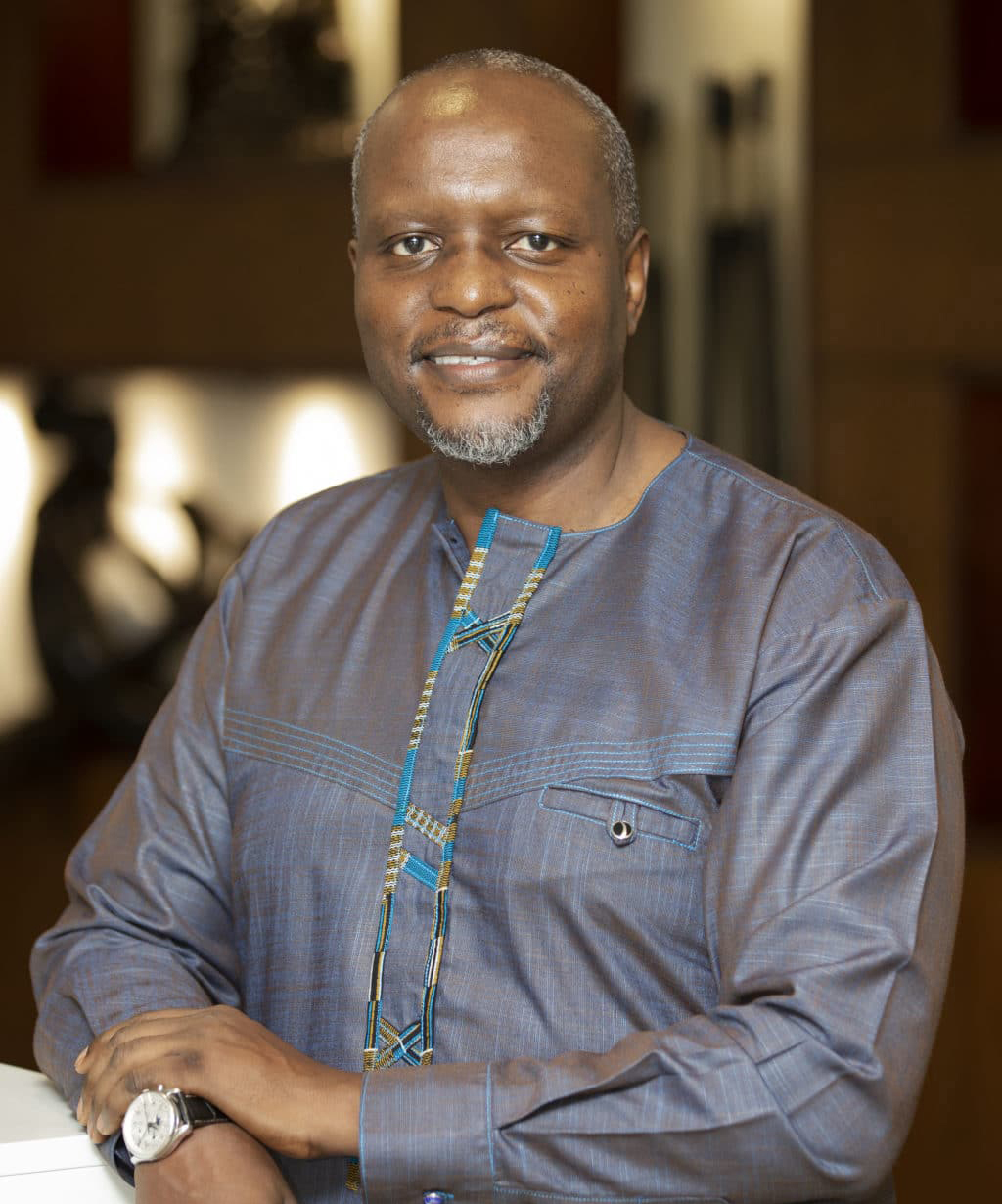
: The nomination speaks volumes about the bank’s commitment to its African operations and its strategic vision for growth on the continent.
: Kariuki’s vast experience and market insight make him a catalyst for growth. With his strategic vision, Standard Chartered can seize opportunities, expand, and provide tailored financial solutions
In a significant move within the banking sector, Kariuki Ngari ascended to CEO Africa at Standard Chartered Bank on April 3, marking a pivotal moment in his illustrious career. As he steps into this new role, Ngari faces a landscape rife with challenges but brimming with opportunities. He is poised to leverage his expertise and track record to propel the bank’s growth trajectory across Africa.
Challenges and Opportunities:
Navigating Regulatory Complexity: One of Kariuki’s foremost challenges will be navigating the diverse regulatory environments across the African continent. With each country presenting unique regulations and compliance requirements, Ngari must adopt a nuanced approach to ensure Standard Chartered Bank’s operations remain compliant while driving growth.
Adapting to Market Dynamics: African markets are diverse and constantly changing. Rapid shifts in consumer preferences, technological advancements, and intense competition characterise them. Kariuki must stay agile and adaptive, seizing opportunities for innovation and market expansion while mitigating risks associated with changing market dynamics.
Fostering Financial Inclusion: Africa offers significant opportunities for financial inclusion, as a large portion of the population remains underserved by traditional banking services. Kariuki has the opportunity to drive initiatives that promote financial literacy, expand access to banking services, and foster inclusive economic growth across the continent.
Previous Achievements and Experience:
Before assuming the role of CEO of Africa, Kariuki served in various leadership positions within Standard Chartered Bank, demonstrating his exceptional leadership capabilities and strategic vision. Some of his notable achievements include:
Driving Digital Transformation: Kariuki played a pivotal role in driving Standard Chartered Bank’s digital transformation agenda, spearheading initiatives to enhance the bank’s digital capabilities and customer experience. Under his leadership, the bank successfully launched innovative digital banking solutions tailored to the African market, driving customer engagement and retention.
Expanding Market Presence: Kariuk has a proven track record of expanding Standard Chartered Bank’s market presence across Africa, identifying growth opportunities, and forging strategic partnerships to penetrate new markets and strengthen the bank’s foothold in existing ones.
Promoting Sustainable Finance: Kariuki is committed to promoting sustainable finance and responsible banking practices. He has championed initiatives focused on environmental, social, and governance (ESG) principles, integrating sustainability into the bank’s business strategy and operations.
Expectations in the New Role:
As CEO of Africa, stakeholders expect Kariuki to bring his wealth of experience, strategic acumen, and unwavering commitment to driving Standard Chartered Bank’s growth agenda in Africa. Key expectations include:
Strategic Vision: Kariuki will continue articulating a clear vision for Standard Chartered Bank’s African operations, leveraging market insights and industry trends to identify growth opportunities and drive sustainable value creation.
Innovation and Digitalization: Ngari will prioritise innovation and digitalisation, harnessing the power of technology to enhance the bank’s offerings, streamline operations, and deliver superior customer experiences.
Stakeholder Engagement: Ngari will intensely focus on stakeholder engagement, fostering relationships with clients, regulators, shareholders, and communities to ensure alignment with the bank’s objectives and values.
The nomination of Kariuki to the position of CEO of Standard Chartered Africa speaks volumes about the bank’s commitment to its African operations and its strategic vision for growth on the continent. Here are a few critical points that the nomination signifies:
Recognition of Talent: Standard Chartered Bank’s decision to appoint Kariuki Ngari as CEO of Africa reflects the bank’s recognition of his exceptional leadership qualities, strategic acumen, and track record of success within the organisation. It indicates that the bank values talent from within its ranks and is committed to nurturing and promoting internal talent to key leadership positions.
Focus on the African Market: By appointing a CEO specifically for the African region, Standard Chartered Bank underscores the importance of the African market in its global strategy. It signifies the bank’s commitment to unlocking the vast opportunities presented by the African continent and leveraging its potential for growth and expansion.
Continuity and Stability: Kariuki’s nomination brings continuity and stability to Standard Chartered Bank’s African operations. With his deep understanding of market dynamics, extensive experience within the organisation, and proven track record of success, Ngari is well-positioned to provide steady leadership and drive the bank’s growth agenda in Africa.
Emphasis on Local Leadership: The appointment of Kariuki, who is of Kenyan nationality, also highlights the importance of local leadership and expertise in driving success in the African market. It demonstrates Standard Chartered Bank’s commitment to fostering a diverse and inclusive leadership culture that reflects the communities and markets it serves.
Strategic Direction: Kariuki’s nomination signifies the bank’s strategic direction and priorities for its African operations. It suggests a focus on driving innovation, digital transformation, and sustainable growth in key markets across the continent, with Ngari leading the charge in executing the bank’s vision and objectives in Africa.
Kariuki’s appointment as CEO of Africa at Standard Chartered Bank marks a significant milestone in the institution’s journey towards consolidating its position as a premier financial institution on the African continent. With an unwavering focus on excellence, strategic foresight, and a proven track record of leadership, Kariuki brings a wealth of experience and expertise that positions him as a catalyst for transformative growth.
His elevation underscores the bank’s confidence in his abilities and its steadfast commitment to fostering homegrown talent and leveraging local expertise to drive success in key markets. Kariuki’s appointment represents more than just a change in leadership; it symbolises a new era of innovation, resilience, and adaptability in navigating the intricacies of the African financial landscape.
In the face of evolving market dynamics, regulatory complexities, and competitive pressures, Kariuki’s leadership will be instrumental in steering Standard Chartered Bank towards sustainable growth and value creation. His strategic vision, coupled with a deep understanding of the African market, will enable the bank to capitalise on emerging opportunities, expand its footprint, and deliver superior financial solutions tailored to the diverse needs of its customers.
Moreover, Kariuki’s appointment reinforces Standard Chartered Bank’s commitment to driving positive impact and fostering inclusive growth across the continent. Kariuki is poised to make a meaningful difference in millions of individuals and businesses across Africa by championing initiatives promoting financial inclusion, sustainability, and responsible banking practices.
In essence, Kariuki’s nomination heralds not just a new chapter but an entire volume in the bank’s narrative of success in Africa. It signifies a renewed sense of purpose, a reaffirmation of values, and a shared commitment to shaping a brighter future for the continent’s economies and communities. As he assumes the mantle of leadership, Ngari stands at the forefront of Standard Chartered Bank’s journey towards becoming the partner of choice for businesses, investors, and individuals alike, propelling Africa towards a future of prosperity and opportunity.
-

 Business & Money8 months ago
Business & Money8 months agoEquity Group Announces Kshs 15.1 Billion Dividend Amid Strong Performance
-

 Politics3 months ago
Politics3 months agoFred Okengo Matiang’i vs. President William Ruto: A 2027 Election Showdown
-
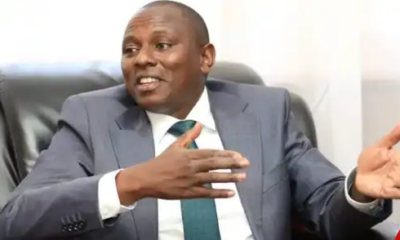
 Politics2 months ago
Politics2 months agoIchung’wah Faces Mt. Kenya Backlash Over Gachagua Impeachment Support
-
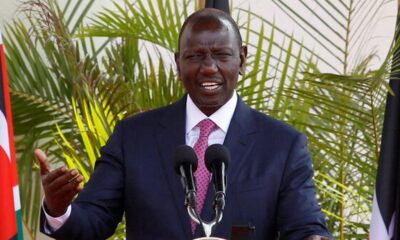
 Politics4 months ago
Politics4 months agoPresident Ruto’s Bold Cabinet Dismissal Sparks Hope for Change
-
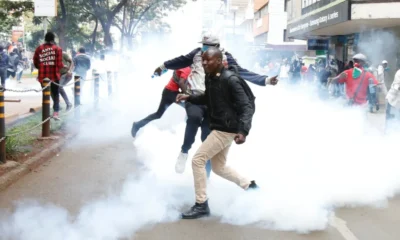
 Politics5 months ago
Politics5 months agoKenya Grapples with Investor Confidence Crisis Amid Tax Protest Fallout
-
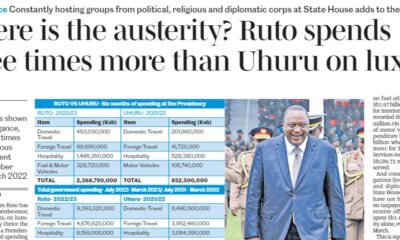
 Politics5 months ago
Politics5 months agoPresident Ruto’s Lavish Spending Amid Kenya’s Economic Struggles Sparks Outrage
-
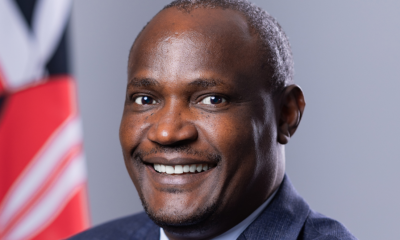
 Politics4 months ago
Politics4 months agoJohn Mbadi Takes Over Kenya’s Treasury: Challenges Ahead
-
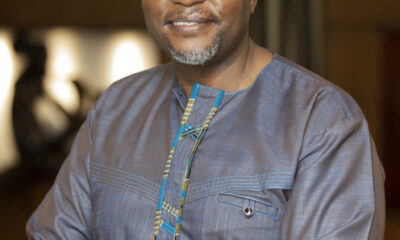
 Business & Money1 week ago
Business & Money1 week agoMeet Kariuki Ngari: Standard Chartered Bank’s new CEO of Africa. What’s Next?





